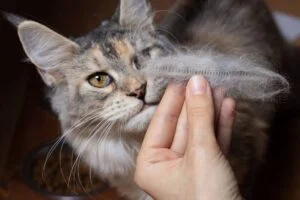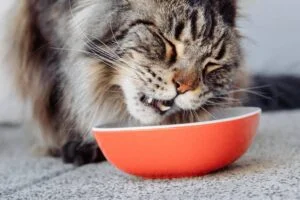How to Prepare Raw Chicken for Cats (The Easy Way)
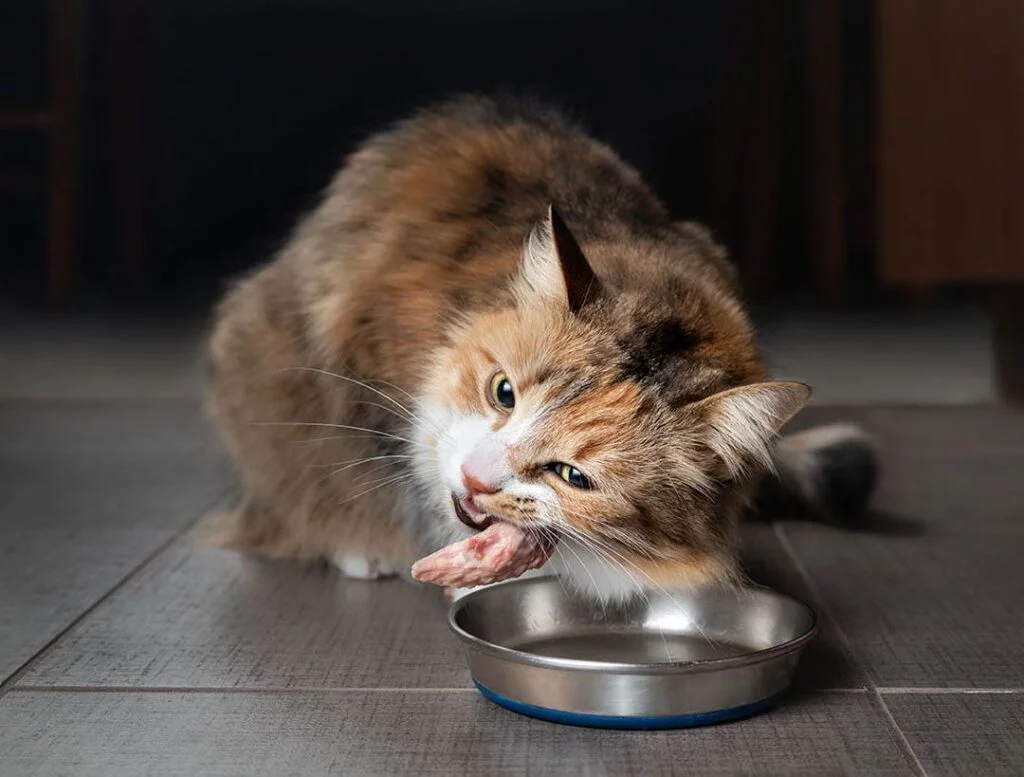
If you’re interested in transitioning your cat to a raw diet, understanding how to properly prepare raw chicken is essential. Although it may seem overwhelming initially, with a bit of guidance and practice, the process becomes straightforward and convenient. This comprehensive article aims to provide you with the knowledge and step-by-step instructions on how to prepare raw chicken for your feline companion.
Feeding your cat a raw diet offers numerous potential benefits, including improved digestion, enhanced coat quality, and increased energy levels. By incorporating raw chicken into their diet, you can provide them with a natural source of protein, essential amino acids, and vital nutrients. However, it’s crucial to follow proper food safety measures and handling techniques to ensure the health and well-being of both your cat and yourself.
In the following sections, we will guide you through the process of preparing raw chicken for your cat, from selecting the right chicken to proper storage and thawing methods. By following these steps, you can learn how to prepare raw chicken for cats.
Benefits of Preparing Raw Chicken for Cats
Feeding your cat raw chicken can be a great way to provide them with a natural and nutritious diet. Raw chicken contains high-quality protein, amino acids, and essential fatty acids that are beneficial for cats. However, it’s important to note that feeding your cat raw chicken comes with some risks, such as bacterial contamination and salmonella.
To minimize these risks, make sure to only feed your cat high-quality, fresh chicken that has been properly handled and stored. It’s also recommended to freeze the chicken for a period of time to kill any potential bacteria before feeding it to your cat.
Additionally, it’s important to ensure that the chicken is properly balanced with other essential nutrients such as vitamins and minerals. You can achieve this by adding other raw ingredients such as vegetables, fruits, and supplements to your cat’s diet. If you’re considering feeding your cat raw chicken, be sure to consult with your veterinarian to ensure that it’s the right choice for your pet cat.
Choose Quality Chicken
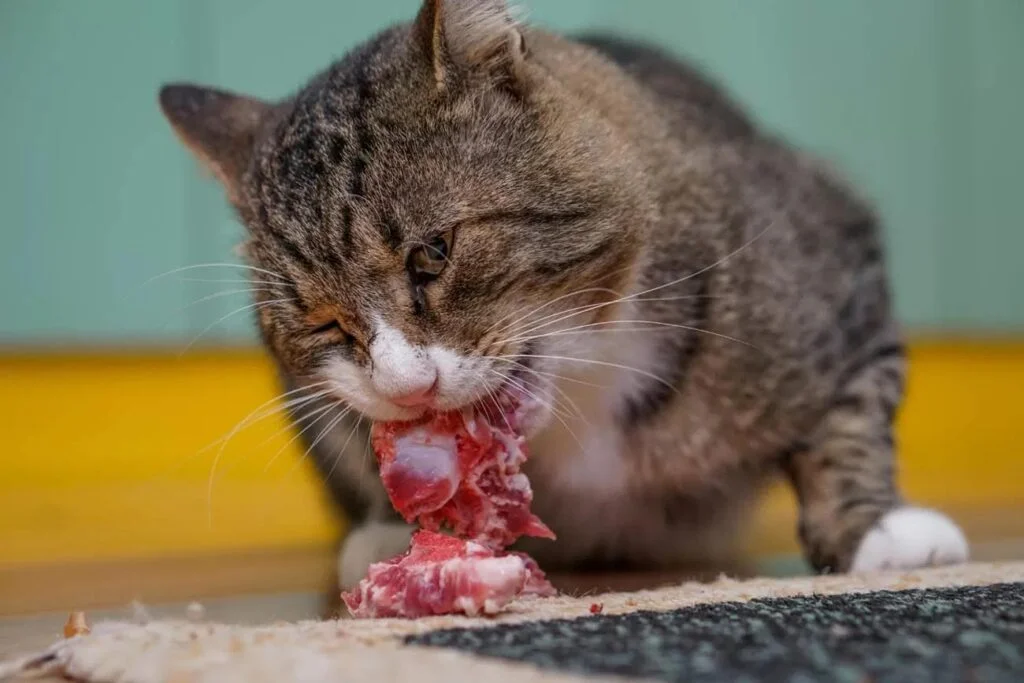
Feeding your cat a raw chicken diet can offer several benefits, but it’s essential to prioritize quality when selecting the chicken. Freshness and quality are critical when it comes to raw chicken.
Look for chicken that has been raised without hormones and antibiotics, as these substances can harm your cat’s health over time. When buying raw chicken, ensure that the meat is fresh, with no signs of discoloration, and the flesh feels firm to the touch.
It’s also essential to handle raw chicken properly to avoid bacterial contamination, which can be harmful to both you and your cat. Always wash your hands, surfaces, and utensils with hot, soapy water before and after handling raw chicken.
Additionally, ensure that your cat’s food bowls are cleaned thoroughly to minimize the risk of bacterial growth. By selecting high-quality chicken and handling it with care, you can safely and effectively incorporate raw chicken into your cat’s diet.
Cut the Chicken into Bite-Sized Pieces
When cutting the chicken, it’s important to ensure that the pieces are small enough for your cat to handle. This not only makes it easier for them to eat, but it also reduces the risk of choking. A good rule of thumb is to cut the chicken into bite-sized pieces that are no larger than the size of your cat’s mouth.
It’s also important to remove any bones from the chicken, as they can pose a serious danger to your cat. Bones can splinter and cause choking or even puncture the digestive tract, which can lead to serious health issues. Always take the time to carefully check each piece of chicken for bones before serving it to your cat.
By cutting the chicken into small, manageable pieces and ensuring that there are no bones present, you can help ensure that your cat is able to safely and easily enjoy their raw chicken meal.
Freeze the Chicken
Freezing raw chicken is an essential step when preparing it for your cat’s consumption. This is because raw chicken may contain harmful bacteria such as salmonella and E. coli that can cause infections in both cats and humans. Freezing the chicken for at least 48 hours at a temperature of -4°F (-20°C) will kill these harmful bacteria and reduce the risk of infection.
It’s important to note that while freezing can eliminate some parasites and bacteria, it may not kill all of them. Therefore, it’s crucial to handle the chicken with care and maintain proper hygiene practices when preparing it for your cat. This includes washing your hands and any surfaces that come into contact with the raw chicken with hot soapy water.
Thaw the Chicken
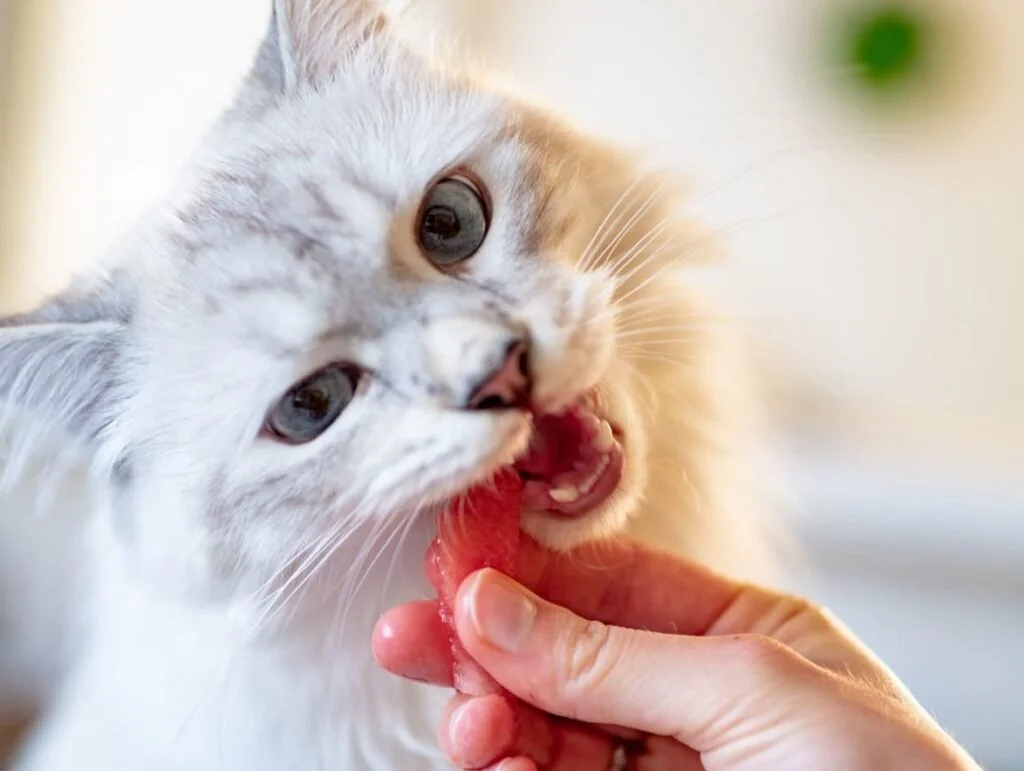
Thawing the chicken properly is an essential step in the preparation process. It’s important to avoid thawing the chicken at room temperature, as this can promote bacterial growth. Instead, place the chicken in the refrigerator the night before you plan to serve it.
This method will allow the chicken to thaw slowly and safely. Make sure the chicken is in a sealed container to prevent any juices from leaking onto other foods and causing cross-contamination.
If you need to thaw the chicken more quickly, you can use the defrost setting on your microwave. However, be sure to monitor the chicken closely, as some microwaves may cook the edges of the chicken during the defrosting process. Once the chicken is thawed, you can proceed with serving it to your feline friend.
Serve and Enjoy!
Once the chicken is thawed, it’s ready to be served to your cat. You can offer it to them as is, or mix it with other raw ingredients to create a balanced raw diet. Just make sure to follow safe food handling practices and store any leftover chicken in the refrigerator for up to three days.
Conclusion
In conclusion, preparing raw chicken for your cat can be a rewarding and beneficial experience. It doesn’t have to be overly complicated or time-consuming if you follow a few simple steps. By doing so, you can ensure that your feline companion receives a well-rounded, nutritious, and tasty meal that promotes good health.
Raw chicken is rich in essential nutrients like protein, vitamins, and minerals, which are vital for your cat’s overall well-being. However, it is crucial to prioritize quality and safety when handling raw food. Make sure to select fresh, high-quality chicken, practice proper hygiene, and store the ingredients correctly.
If you have any uncertainties or queries about your cat’s specific dietary needs, it’s always wise to consult with your veterinarian for professional guidance and tailored advice.
